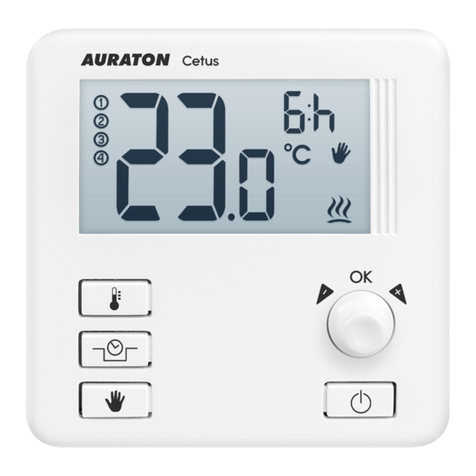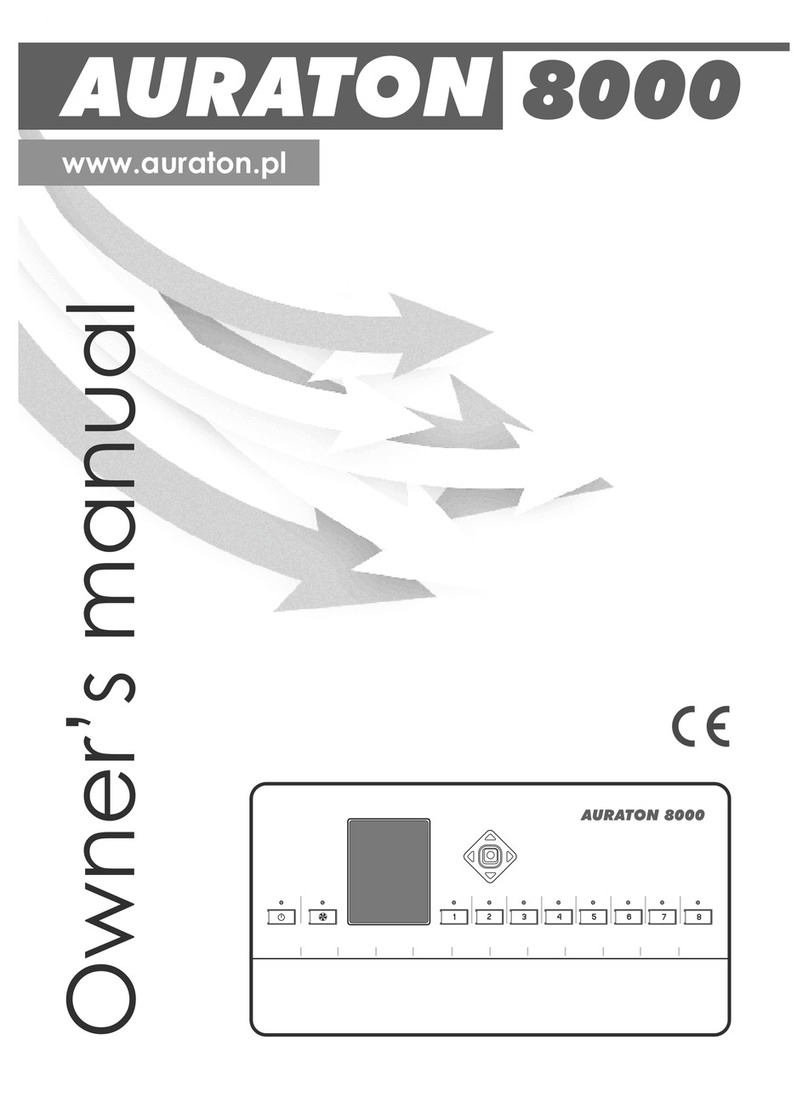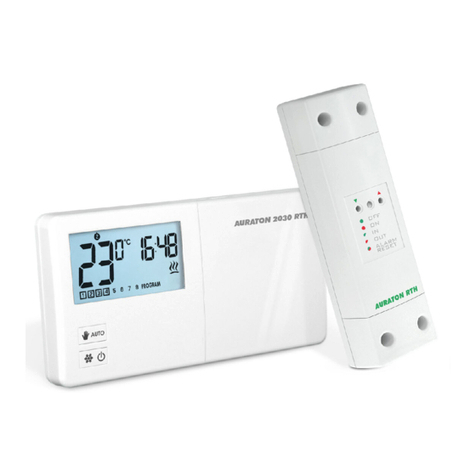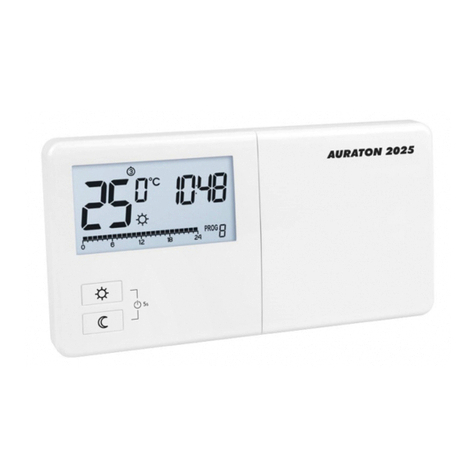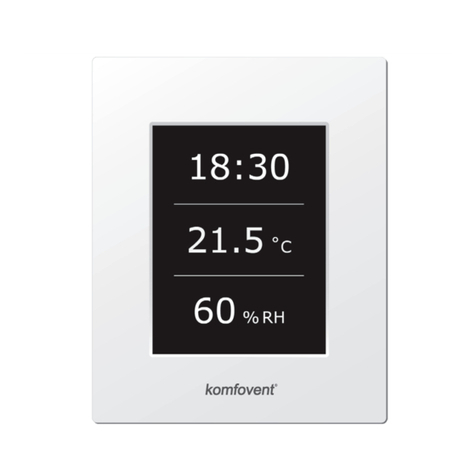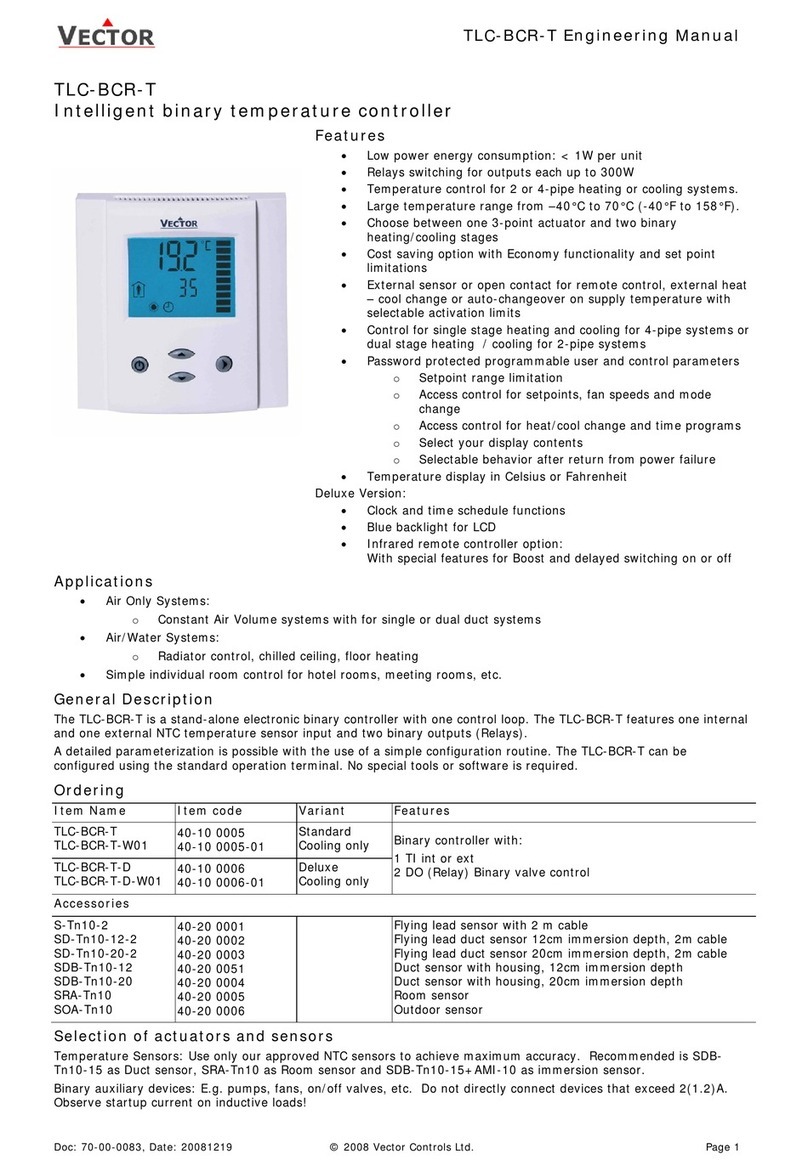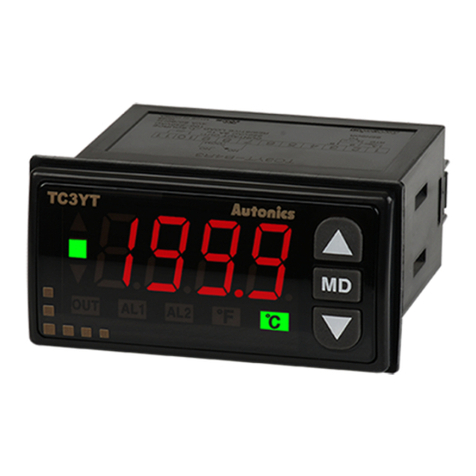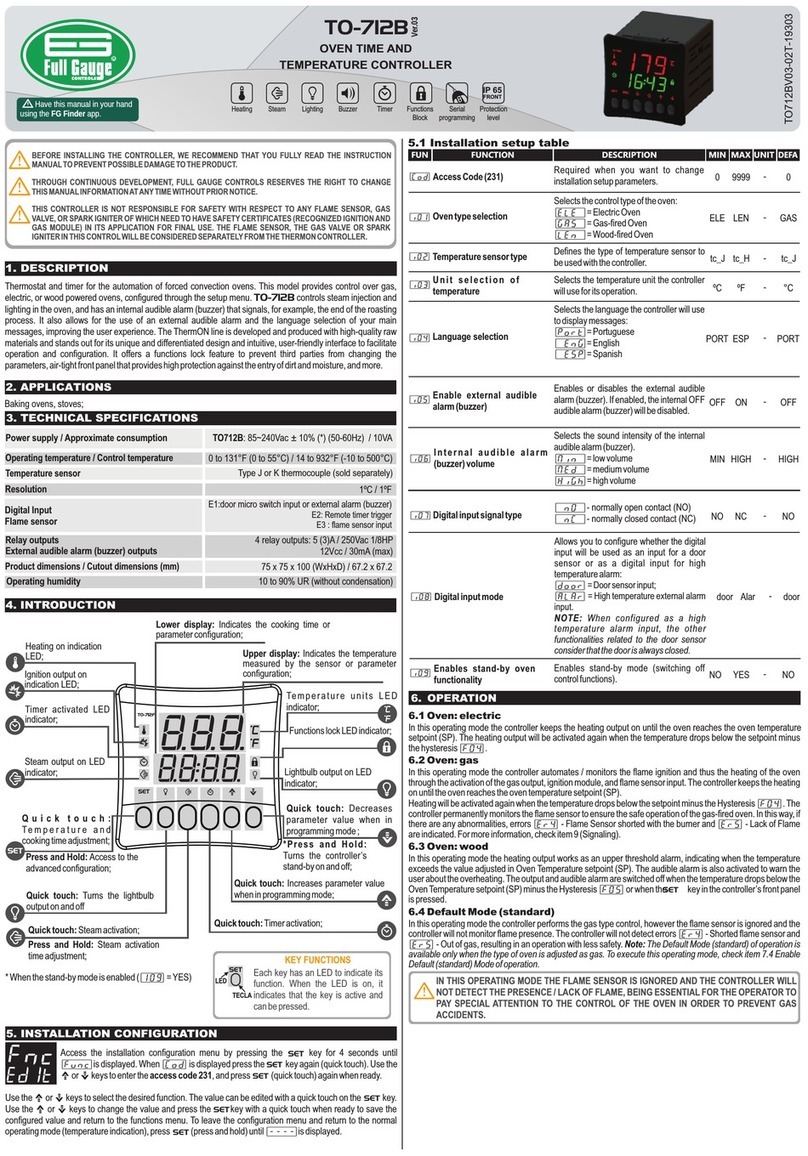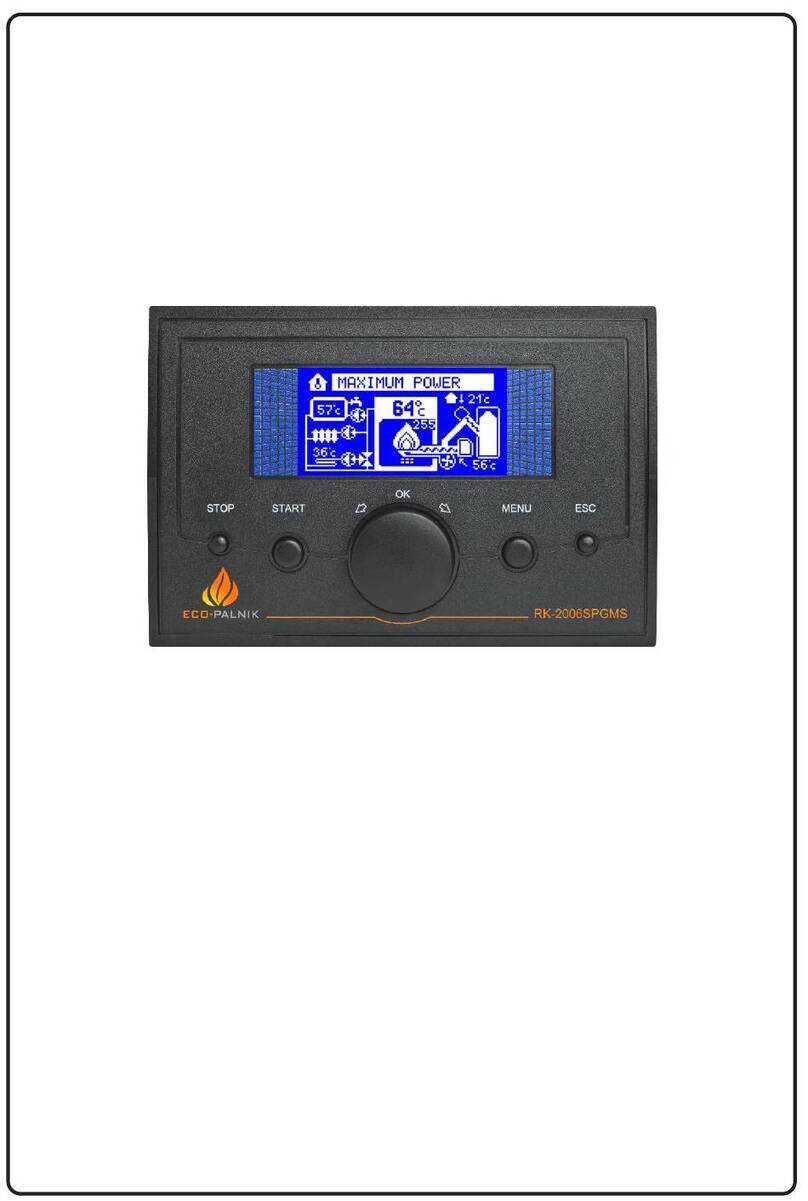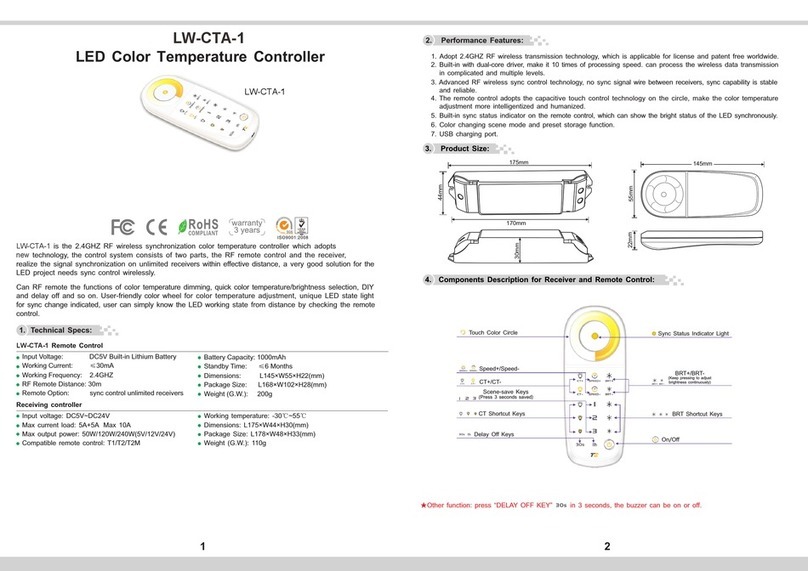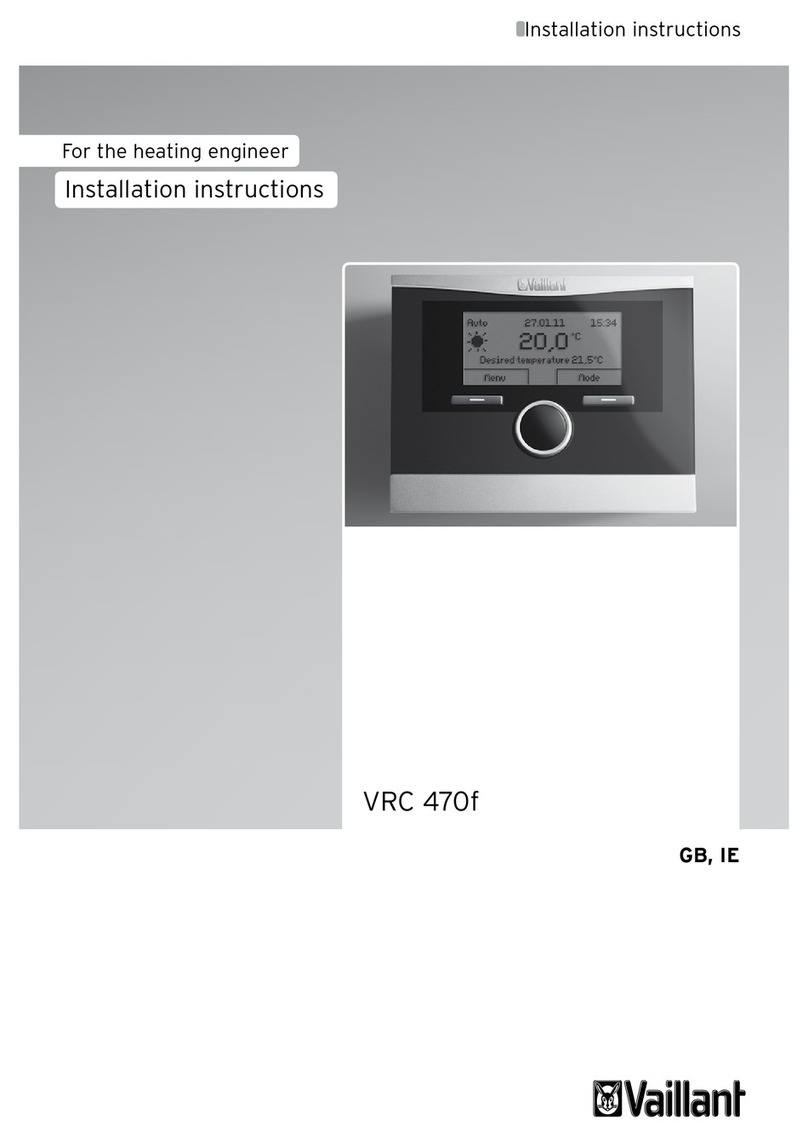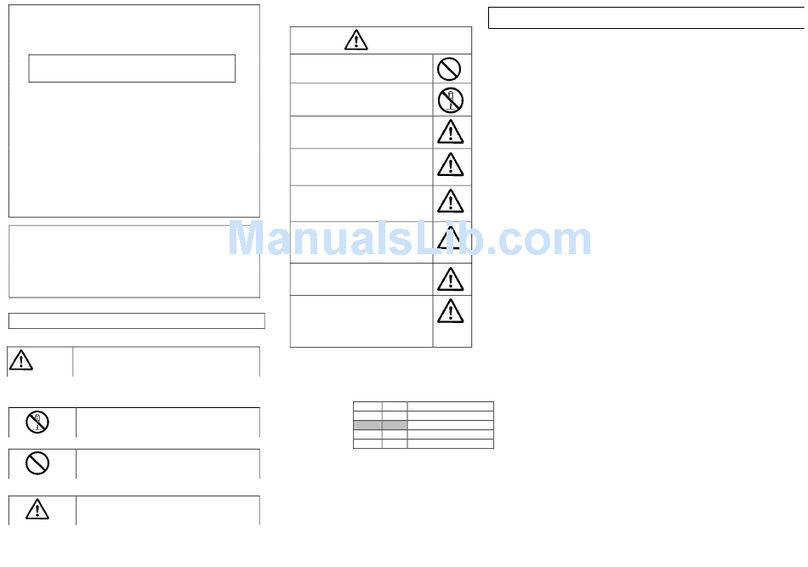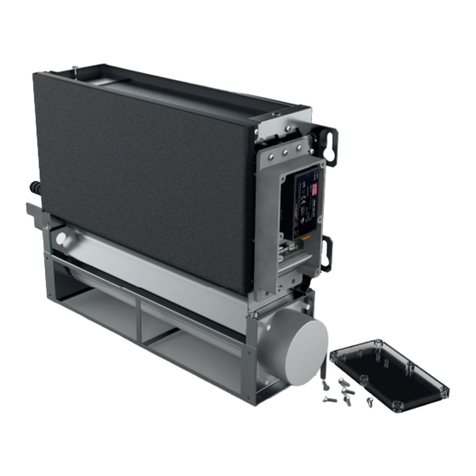AURATON 3021 User manual

OFF
ON
IN
OUT
ALARM
RESET
3021
3021 P
3021 DS
3021 RTH
OWNER’S MANUAL
EN

2
CUATION!
AURATON 3021 RTH set, consists of two devices:
AURATON 3021 R – transmitter (wireless temperature controller)
ź
AURATON RTH – receiver
ź
3
AURATON 3021 / 3021 P / 3021 RTH / 3021 DS
3 independent temperature settings
Day, night, anti-freeze.
9 independent temperature programs
Including 6-user defined ones.
Backlit LCD display
Backlit LCD display to control the device in areas with
poor lighting.
LCD
Thank you for purchasing the latest temperature controller based
on an advanced microprocessor.
Temperature controller explained
LCD display
temperature
setting key
On the front of the enclosure, there are four function keys, backlit
LCD display and temperature control knob with the OK button.
date/time/day of
week setting key
mode select key:
selection key
day mode
night mode
setting knob with
integrated OK
button

2
CUATION!
AURATON 3021 RTH set, consists of two devices:
AURATON 3021 R – transmitter (wireless temperature controller)
ź
AURATON RTH – receiver
ź
3
AURATON 3021 / 3021 P / 3021 RTH / 3021 DS
3 independent temperature settings
Day, night, anti-freeze.
9 independent temperature programs
Including 6-user defined ones.
Backlit LCD display
Backlit LCD display to control the device in areas with
poor lighting.
LCD
Thank you for purchasing the latest temperature controller based
on an advanced microprocessor.
Temperature controller explained
LCD display
temperature
setting key
On the front of the enclosure, there are four function keys, backlit
LCD display and temperature control knob with the OK button.
date/time/day of
week setting key
mode select key:
selection key
day mode
night mode
setting knob with
integrated OK
button

4
12 3 4
13
5 6 78 9 11 1210
5
6. Day mode indicator ( )
Indicates that the controller is in the day mode.
(see: "Temperature programming")
7. Night mode indicator ( )
Indicates that the controller is in the night mode.
(see: "Temperature programming")
8. Anti-freeze mode indicator ( )
Indicates that the controller is in the anti-freeze mode.
(see: "Anti-freeze mode”)
9 . Manual control indicator ( )
Appears if the programmed mode is switched off.
(see: "Manual control mode”)
11. Controller power on indicator ( )
Indicates the operating status. Visible when the controlled device
is started.
12. Program number
Indicates the number of program currently executed.
(see: "Factory programs" and "Weekly programming")
13. Battery exhausted ( )
Displayed when the battery voltage drops below the allowed
limit. Replace the battery as soon as possible.
NOTE: To save the parameters programmed, the battery
exchange operation should not last longer than 30 seconds.
10. ( ) – AURATON 3021R onlyTransmission symbol
Indicates ongoing communication with the RTH receiver.
Display
1. Day of week ( ) Indicates the current day of the week.
Each day has a number assigned.
2. – In normal operating mode, the controller displays
the temperature of the room it is installed in.
3.Temperature unit – Indicates temperature displayed in
centigrade ( ).
4. Clock – Time displayed in 24-hour mode.
5. Timeline – Program progress indicator. Line divided to 24
sections, each corresponding to one hour. Indicates program
execution method. (see: "Timeline")
–
Temperature

4
12 3 4
13
5 6 78 9 11 1210
5
6. Day mode indicator ( )
Indicates that the controller is in the day mode.
(see: "Temperature programming")
7. Night mode indicator ( )
Indicates that the controller is in the night mode.
(see: "Temperature programming")
8. Anti-freeze mode indicator ( )
Indicates that the controller is in the anti-freeze mode.
(see: "Anti-freeze mode”)
9 . Manual control indicator ( )
Appears if the programmed mode is switched off.
(see: "Manual control mode”)
11. Controller power on indicator ( )
Indicates the operating status. Visible when the controlled device
is started.
12. Program number
Indicates the number of program currently executed.
(see: "Factory programs" and "Weekly programming")
13. Battery exhausted ( )
Displayed when the battery voltage drops below the allowed
limit. Replace the battery as soon as possible.
NOTE: To save the parameters programmed, the battery
exchange operation should not last longer than 30 seconds.
10. ( ) – AURATON 3021R onlyTransmission symbol
Indicates ongoing communication with the RTH receiver.
Display
1. Day of week ( ) Indicates the current day of the week.
Each day has a number assigned.
2. – In normal operating mode, the controller displays
the temperature of the room it is installed in.
3.Temperature unit – Indicates temperature displayed in
centigrade ( ).
4. Clock – Time displayed in 24-hour mode.
5. Timeline – Program progress indicator. Line divided to 24
sections, each corresponding to one hour. Indicates program
execution method. (see: "Timeline")
–
Temperature

6
Description of the RTH receiver (AURATON 3021 RTH)
The AURATON RTH receiver cooperates with the AURATON 3021R
wireless receiver. The receiver is installed on the heating or air
conditioning device and can operate under the load of 16 A.
7
cable tie clamp
control connection terminal
(a terminal for fastening a two-core
cable of the heating or air conditioning
device to be controlled
button for deregistering
already paired devices
button for pairing devices
with the RTH receiver
LED indicating operation
of the device
cable tie clamp
power supply terminal
~230 VAC
legend
The LED light’s green – the output device is off (the contacts
COM and NC are closed).
The LED light’s red – the output device is on (the contacts
COM and NO are closed).
The LED flashes green – the RTH receiver awaits the device
to be paired (chapter: “Pairing the wireless regulator and the
RTH receiver”).
The LED flashes red – the RTH receiver awaits the device
to be deregistered (chapter: “Deregistering the regulator
from the receiver”).
The LED flashes alternating red and green:
ALARM - the RTH receiver has lost connection with one of
the paired devices (chapter “Special situations”).
RESET - receiver deregisters all previously paired devices -
(chapter “Deregistering all devices paired with the
RTH receiver”).
Legend - description of LED signalling
hole for fastening the receiver
to the wall with a screw
hole for fastening the receiver
to the wall with a screw

6
Description of the RTH receiver (AURATON 3021 RTH)
The AURATON RTH receiver cooperates with the AURATON 3021R
wireless receiver. The receiver is installed on the heating or air
conditioning device and can operate under the load of 16 A.
7
cable tie clamp
control connection terminal
(a terminal for fastening a two-core
cable of the heating or air conditioning
device to be controlled
button for deregistering
already paired devices
button for pairing devices
with the RTH receiver
LED indicating operation
of the device
cable tie clamp
power supply terminal
~230 VAC
legend
The LED light’s green – the output device is off (the contacts
COM and NC are closed).
The LED light’s red – the output device is on (the contacts
COM and NO are closed).
The LED flashes green – the RTH receiver awaits the device
to be paired (chapter: “Pairing the wireless regulator and the
RTH receiver”).
The LED flashes red – the RTH receiver awaits the device
to be deregistered (chapter: “Deregistering the regulator
from the receiver”).
The LED flashes alternating red and green:
ALARM - the RTH receiver has lost connection with one of
the paired devices (chapter “Special situations”).
RESET - receiver deregisters all previously paired devices -
(chapter “Deregistering all devices paired with the
RTH receiver”).
Legend - description of LED signalling
hole for fastening the receiver
to the wall with a screw
hole for fastening the receiver
to the wall with a screw

8 9
1. 2.
1. 2.
Selecting proper location for temperature
controller
Controller location largely affects its proper operation. When located
in a place without air circulation or exposed to direct sunlight, the
controller may not control the temperature properly. The controller
should be located on an internal wall of a building (partition wall) in
a place with free air circulation. Avoid locations near sources of heat
(TV set, heater, refrigerator) or places exposed to direct sunlight.
Location near doors and the resultant vibration may cause the
controller to function improperly.
Wiring your AURATON 3021
To connect the wiring, remove the enclosure as described below:
Wiring terminals are located in the controller back wall, under
the plastic cover.
cover
screw
1. 2.

8 9
1. 2.
1. 2.
Selecting proper location for temperature
controller
Controller location largely affects its proper operation. When located
in a place without air circulation or exposed to direct sunlight, the
controller may not control the temperature properly. The controller
should be located on an internal wall of a building (partition wall) in
a place with free air circulation. Avoid locations near sources of heat
(TV set, heater, refrigerator) or places exposed to direct sunlight.
Location near doors and the resultant vibration may cause the
controller to function improperly.
Wiring your AURATON 3021
To connect the wiring, remove the enclosure as described below:
Wiring terminals are located in the controller back wall, under
the plastic cover.
cover
screw
1. 2.

10 11
AURATON 3021
AURATON 3021 R
3.
NO COM NC
NC
COM
NO
wire
terminals
cover
wire
terminals
It is a typical bistable relay. The NC terminal is not used in most cases.
NOTE: Replace the plastic cover after wiring.
Battery installation / replacement
The battery socket is located inside the controller, at the front of the
enclosure. To install the batteries, remove the controller enclosure
as described in the "Wiring your AURATON 3021" section.
NOTE: We recommend using alkaline bateries to supply AURATON
controllers. Rechargeable batteries should not be used because
their rated voltage is too low.
2x AAA 1,5 V
battery socket
Place two AAA 1.5V batteries in the battery socket
observing the correct polarity. ON 3021" section.
2x AAA 1,5 V
battery socket
A terminal block
An external
temperature sensor
AURATON 3021 DS / 3021 P
Connecting an external
temperature sensor.

10 11
AURATON 3021
AURATON 3021 R
3.
NO COM NC
NC
COM
NO
wire
terminals
cover
wire
terminals
It is a typical bistable relay. The NC terminal is not used in most cases.
NOTE: Replace the plastic cover after wiring.
Battery installation / replacement
The battery socket is located inside the controller, at the front of the
enclosure. To install the batteries, remove the controller enclosure
as described in the "Wiring your AURATON 3021" section.
NOTE: We recommend using alkaline bateries to supply AURATON
controllers. Rechargeable batteries should not be used because
their rated voltage is too low.
2x AAA 1,5 V
battery socket
Place two AAA 1.5V batteries in the battery socket
observing the correct polarity. ON 3021" section.
2x AAA 1,5 V
battery socket
A terminal block
An external
temperature sensor
AURATON 3021 DS / 3021 P
Connecting an external
temperature sensor.

12
CAUTION
13
To fix the AURATON 3021 controller to the wall:
1. Remove the enclosure (as described in the "Wiring your
AURATON 3021" section).
2. Drill 2 holes diameter 6 mm
in the wall (use the back of
the controller enclosure to set
the right spacing of the
holes).
Fixing the controller to the wall
NO COM NC
hole for a mounting
screw
hole for
a mounting
screw
3. Place plastic plugs in the drilled holes.
4. Screw the back of the controller enclosure to the wall with the
two screws provided.
5. Replace the controller enclosure.
NOTE: No expansion bolts are needed for wooden walls. Just drill holes
diameter 2.7 mm (instead of 6 mm) and screw the screws directly into
the wood.
Replacing the enclosure 3021
While replacing the front part of the enclosure on the back one, pay
attention to the pin connector that controls the relay.
While reassembling ensure that the pins engage with the pin
connector socket.
Pins Pin
connector
socket
FRONT
ENCLOSURE
BACK
COVER

12
CAUTION
13
To fix the AURATON 3021 controller to the wall:
1. Remove the enclosure (as described in the "Wiring your
AURATON 3021" section).
2. Drill 2 holes diameter 6 mm
in the wall (use the back of
the controller enclosure to set
the right spacing of the
holes).
Fixing the controller to the wall
NO COM NC
hole for a mounting
screw
hole for
a mounting
screw
3. Place plastic plugs in the drilled holes.
4. Screw the back of the controller enclosure to the wall with the
two screws provided.
5. Replace the controller enclosure.
NOTE: No expansion bolts are needed for wooden walls. Just drill holes
diameter 2.7 mm (instead of 6 mm) and screw the screws directly into
the wood.
Replacing the enclosure 3021
While replacing the front part of the enclosure on the back one, pay
attention to the pin connector that controls the relay.
While reassembling ensure that the pins engage with the pin
connector socket.
Pins Pin
connector
socket
FRONT
ENCLOSURE
BACK
COVER

14
OFF
ON
IN
OUT
ALARM
RESET
Fastening the RTH receiver
cover
NOTE !
When installing the receiver its power
supply must be disconnected. It is
recommended that the installation is
performed by a qualified specialist.
The permanent electrical system of
a building must include a breaker and
an overcurrent protection.
!
1. Take off protective covers from the lower
and upper part of the receiver.
2. Take off cable tie clamps from the lower and
upper part of the receiver.
3. Connect the heating device to the control
connection terminals of the receiver.
Proceed in accordance with the service
manual of the heating device. Most
commonly, the COM (common) and NO
(normally open) terminals.
4. Connect power supply conductors to the
power supply terminals of the receiver,
observing safety rules.
!
15
5. After connecting the conductors, they must be
secured with the cable tie clamps and reinstall
protective covers of the receiver.
To fasten the RTH receiver to the wall:
1) Remove protective covers from the lower and upper part of the regulator.
(See chapter: “Fastening the RTH receiver”).
2) On the wall, mark the location of holes for fastening screws.
3) In marked places, drill holes of a diameter corresponding to the bundled
wall plugs (5 mm).
4) Insert wall plugs into the drilled holes.
5) Screw in the RTH receiver to the wall with screws, making sure they hold
the receiver securely.
Fastening the RTH receiver to the wall
WARNING !
Cables supplied with the regulator are designed for conducting maximal
load of 2.5 A. If devices to be connected require more power, the cables need
to be replaced with cables of the appropriate cross-sectional area.

14
OFF
ON
IN
OUT
ALARM
RESET
Fastening the RTH receiver
cover
NOTE !
When installing the receiver its power
supply must be disconnected. It is
recommended that the installation is
performed by a qualified specialist.
The permanent electrical system of
a building must include a breaker and
an overcurrent protection.
!
1. Take off protective covers from the lower
and upper part of the receiver.
2. Take off cable tie clamps from the lower and
upper part of the receiver.
3. Connect the heating device to the control
connection terminals of the receiver.
Proceed in accordance with the service
manual of the heating device. Most
commonly, the COM (common) and NO
(normally open) terminals.
4. Connect power supply conductors to the
power supply terminals of the receiver,
observing safety rules.
!
15
5. After connecting the conductors, they must be
secured with the cable tie clamps and reinstall
protective covers of the receiver.
To fasten the RTH receiver to the wall:
1) Remove protective covers from the lower and upper part of the regulator.
(See chapter: “Fastening the RTH receiver”).
2) On the wall, mark the location of holes for fastening screws.
3) In marked places, drill holes of a diameter corresponding to the bundled
wall plugs (5 mm).
4) Insert wall plugs into the drilled holes.
5) Screw in the RTH receiver to the wall with screws, making sure they hold
the receiver securely.
Fastening the RTH receiver to the wall
WARNING !
Cables supplied with the regulator are designed for conducting maximal
load of 2.5 A. If devices to be connected require more power, the cables need
to be replaced with cables of the appropriate cross-sectional area.

NOTE: If the wall is wooden,
there is no need to use wall
plugs. In such a case, drill two
holes 2.7 mm in diameter
instead of 5 mm, and screw the
screws directly into the wood.
NOTE: The RTH receiver
cannot be placed in metal
containers (e.g. an assembly
box, a metal enclosure of
a heater) in order to not to
interfere with its operation.
OFF
ON
IN
OUT
ALARM
RESET
hole for fastening
the receiver to the
wall with a screw
16
hole for fastening
the receiver to the
wall with a screw
Pairing the wireless temperature regulator
with the RTH receiver
NOTE: The wireless temperature regulator sold with the receiver is
already paired. Devices sold separately require “pairing”.
17
3. A properly completed pairing process is signalled by the LED on the receiver
no longer flashing green and the receiver reverting back to normal
operation.
In the event of an error during the pairing process, repeat steps 1 and 2.
Should more errors occur, deregister all devices by executing the RESET
function of the receiver (see “RESET - Deregistering all devices paired with
the receiver”) and attempt to pair the device again.
NOTE: One receiver can have only one temperature regulator assigned.
1. The process of pairing the regulator with the
receiver is initiated by pressing the left
pairing button (marked with a green triangle
- ) on the receiver and holding it for at least
2 seconds, until the LED starts flashing
green, and then releasing the button.
The AURATON RTH receiver waits for pairing
for 120 seconds. After that time, it
automatically returns back to normal
operation.
2.
transmission symbol ( ) appears on the display. Release the button - the
regulator transmits the pairing signal for 5 seconds.
On the regulator, press the button and hold it for 5 seconds until the {prog}
{}
LED

NOTE: If the wall is wooden,
there is no need to use wall
plugs. In such a case, drill two
holes 2.7 mm in diameter
instead of 5 mm, and screw the
screws directly into the wood.
NOTE: The RTH receiver
cannot be placed in metal
containers (e.g. an assembly
box, a metal enclosure of
a heater) in order to not to
interfere with its operation.
OFF
ON
IN
OUT
ALARM
RESET
hole for fastening
the receiver to the
wall with a screw
16
hole for fastening
the receiver to the
wall with a screw
Pairing the wireless temperature regulator
with the RTH receiver
NOTE: The wireless temperature regulator sold with the receiver is
already paired. Devices sold separately require “pairing”.
17
3. A properly completed pairing process is signalled by the LED on the receiver
no longer flashing green and the receiver reverting back to normal
operation.
In the event of an error during the pairing process, repeat steps 1 and 2.
Should more errors occur, deregister all devices by executing the RESET
function of the receiver (see “RESET - Deregistering all devices paired with
the receiver”) and attempt to pair the device again.
NOTE: One receiver can have only one temperature regulator assigned.
1. The process of pairing the regulator with the
receiver is initiated by pressing the left
pairing button (marked with a green triangle
- ) on the receiver and holding it for at least
2 seconds, until the LED starts flashing
green, and then releasing the button.
The AURATON RTH receiver waits for pairing
for 120 seconds. After that time, it
automatically returns back to normal
operation.
2.
transmission symbol ( ) appears on the display. Release the button - the
regulator transmits the pairing signal for 5 seconds.
On the regulator, press the button and hold it for 5 seconds until the {prog}
{}
LED

18
Deregistering the regulator from the receiver
1.Deregistering the temperature controller from
the receiver is initiated by pressing the right
deregistering button (marked with a red
triangle - ) on the receiver and holding it for at
least 2 seconds, until the LED starts flashing
red, and then releasing the button.
The AURATON RTH receiver waits for
deregistering for 120 seconds. After that time,
it automatically returns back to normal
operation.
LED
3. A properly completed deregistering process is signalled by the LED on the
receiver no longer flashing red and the receiver reverting back to normal
operation.
In the event of an error during the deregistering process, repeat steps
1 and 2. Should more errors occur, deregister all paired devices (see “RESET -
Deregistering all devices paired with the receiver”) and attempt to pair the
device again.
2.
transmission symbol ( ) appears on the display. Release the button - the
regulator transmits the pairing signal for 5 seconds.
On the regulator, press the button and hold it for 5 seconds until the [prog]
19
RESET - Deregistering all devices paired with
the receiver
In order to deregister all devices paired with the
receiver, simultaneously press both the pairing
and the deregistering button ( and ) and hold
them for at least 5 seconds until the LED flashes
alternating red and green. Then release both
buttons.
A properly completed process of
deregistering all devices is signalled after
approx. 2 seconds by the LED colour
changing to green and then switching it off
for a short period of time.
LED
NOTE: If after executing the RESET function the RTH receiver is disconnected
from power supply and then connected again, the receiver will automatically
enter “pairing” mode for 120 seconds. A newly purchased RTH receiver
without any factory-paired devices (i.e. not the one bundled with the
regulator) will behave the same way.
Signalling operation and reception of data packet
Each radio transmission received by the AURATON RTH receiver from the
paired device is signalled by a temporary change of LED colour to orange.
Switching on the relay is signalled by the LED lit red, whereas switching it off is
signalled by the LED lit green.

18
Deregistering the regulator from the receiver
1.Deregistering the temperature controller from
the receiver is initiated by pressing the right
deregistering button (marked with a red
triangle - ) on the receiver and holding it for at
least 2 seconds, until the LED starts flashing
red, and then releasing the button.
The AURATON RTH receiver waits for
deregistering for 120 seconds. After that time,
it automatically returns back to normal
operation.
LED
3. A properly completed deregistering process is signalled by the LED on the
receiver no longer flashing red and the receiver reverting back to normal
operation.
In the event of an error during the deregistering process, repeat steps
1 and 2. Should more errors occur, deregister all paired devices (see “RESET -
Deregistering all devices paired with the receiver”) and attempt to pair the
device again.
2.
transmission symbol ( ) appears on the display. Release the button - the
regulator transmits the pairing signal for 5 seconds.
On the regulator, press the button and hold it for 5 seconds until the [prog]
19
RESET - Deregistering all devices paired with
the receiver
In order to deregister all devices paired with the
receiver, simultaneously press both the pairing
and the deregistering button ( and ) and hold
them for at least 5 seconds until the LED flashes
alternating red and green. Then release both
buttons.
A properly completed process of
deregistering all devices is signalled after
approx. 2 seconds by the LED colour
changing to green and then switching it off
for a short period of time.
LED
NOTE: If after executing the RESET function the RTH receiver is disconnected
from power supply and then connected again, the receiver will automatically
enter “pairing” mode for 120 seconds. A newly purchased RTH receiver
without any factory-paired devices (i.e. not the one bundled with the
regulator) will behave the same way.
Signalling operation and reception of data packet
Each radio transmission received by the AURATON RTH receiver from the
paired device is signalled by a temporary change of LED colour to orange.
Switching on the relay is signalled by the LED lit red, whereas switching it off is
signalled by the LED lit green.

20 21
Starting the controller for the first time
After correct installation of the
batteries, the LCD will display, for
a second, all segments followed by the
firmware version number.
After a while, the controller will
automatically switch to time setting
mode. A blinking component on the
display is in edit mode. Turn the knob
clockwise or counter clockwise to set
the hour desired and confirm with the
key.
Turn the knob clockwise or counter
clockwise to set the correct value for
minutes and, again confirm setting
with the key.
In the top left corner a blinking day
symbol will appear. Turn the knob
clockwise or counter clockwise to set
the day desired and confirm with the
key .
<OK
<OK.
NOTE: If no key is pressed for 60 seconds in the initial edit mode,
the default time 12:00 and Monday will be automatically
set.
NOTE: While programming any other functions, if no key is
pressed for 10 seconds, this will be interpreted as pressing
the key. <OK
Setting the clock and day of week
To set the clock:
1. Press the
A segment with time will start
blinking on the display.
2. Turn the knob clockwise or counter
clockwise to set the hour desired
and confirm with the key.
3. Turn the knob clockwise or counter
clockwise to set the correct value
for minutes and again confirm with
the key.
<zeg
OK...
OK..
key.
This manual suits for next models
3
Table of contents
Other AURATON Temperature Controllers manuals
Popular Temperature Controllers manuals by other brands
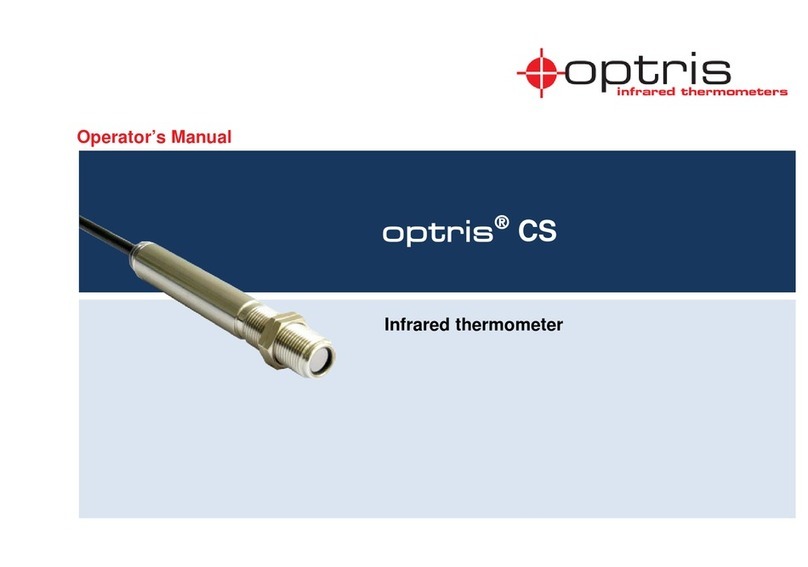
optris
optris CS series Operator's manual
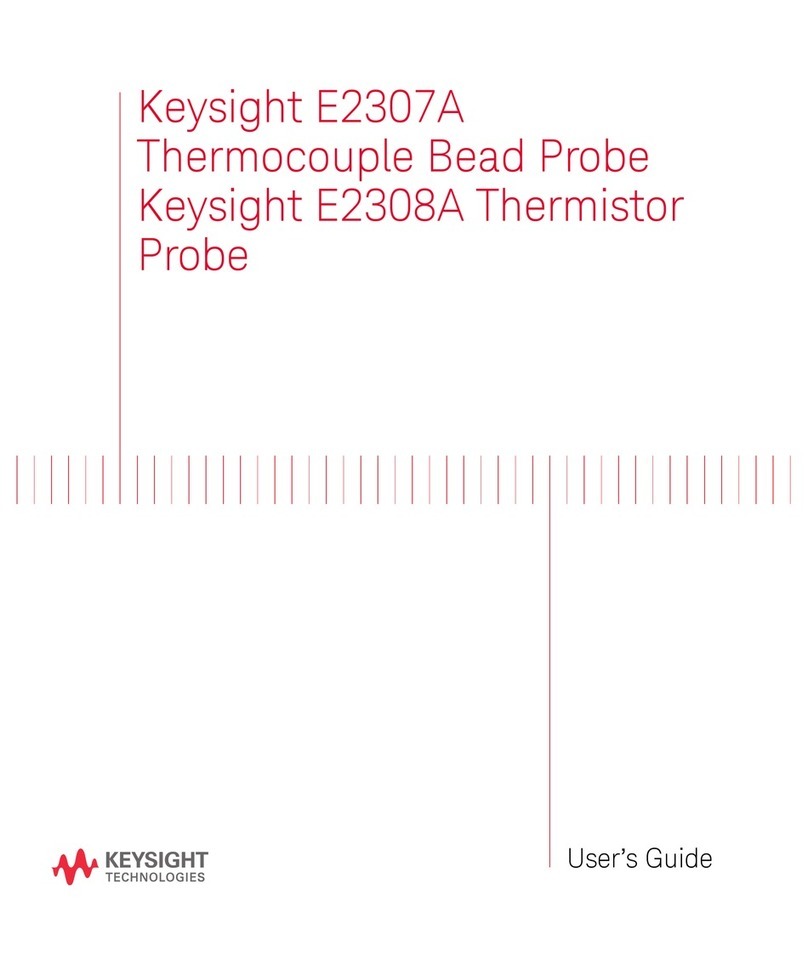
Keysight Technologies
Keysight Technologies E2307A user guide
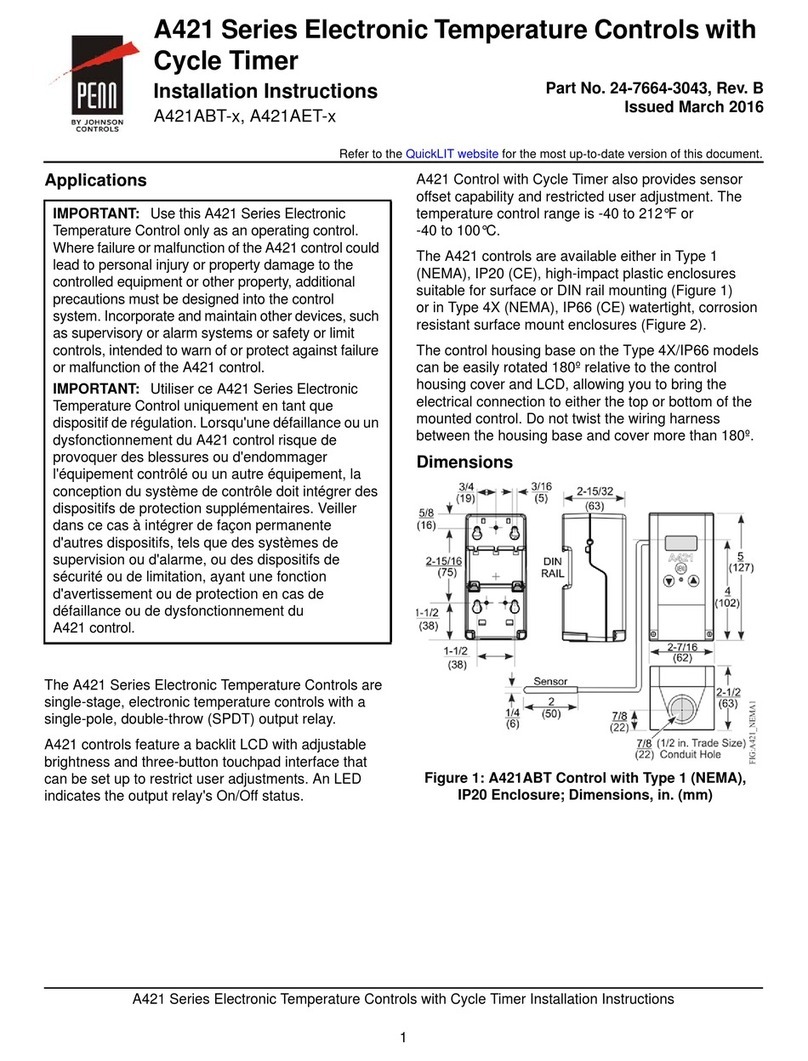
Penn
Penn A421ABT series installation instructions
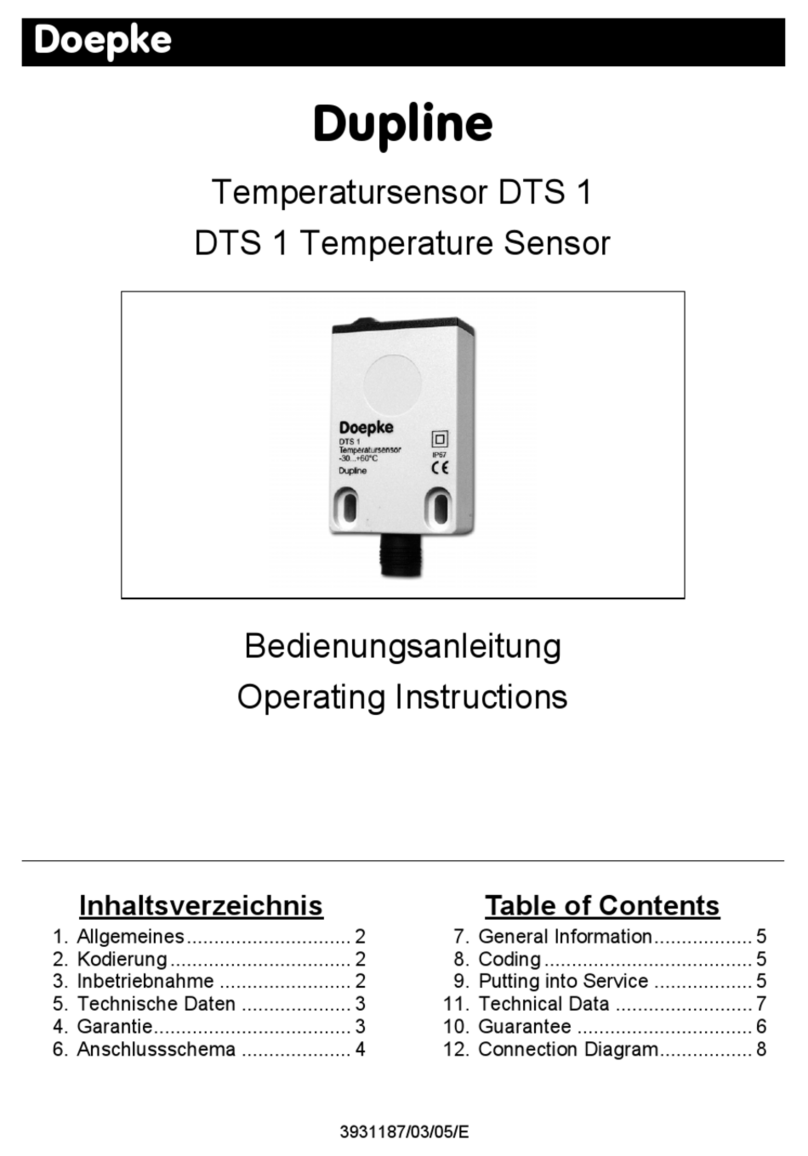
Doepke
Doepke Dupline DTS 1 operating instructions
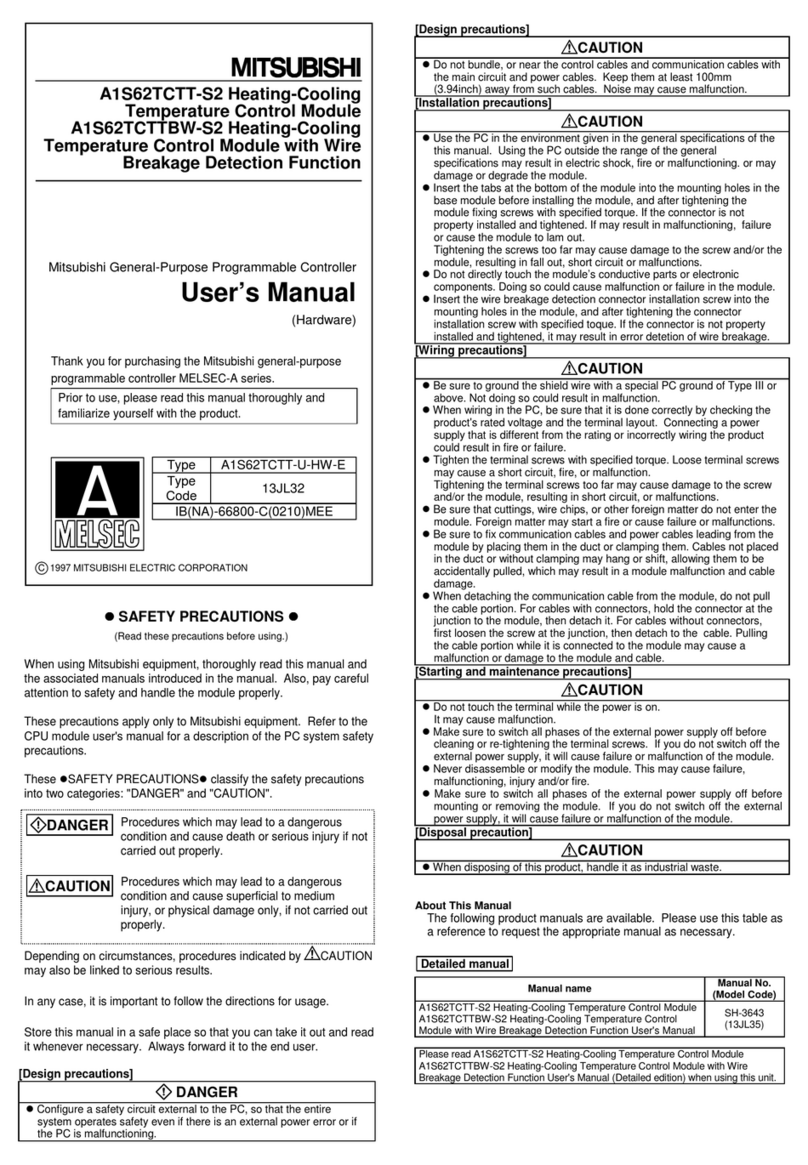
Mitsubishi
Mitsubishi A1S62TCTT-S2 user manual
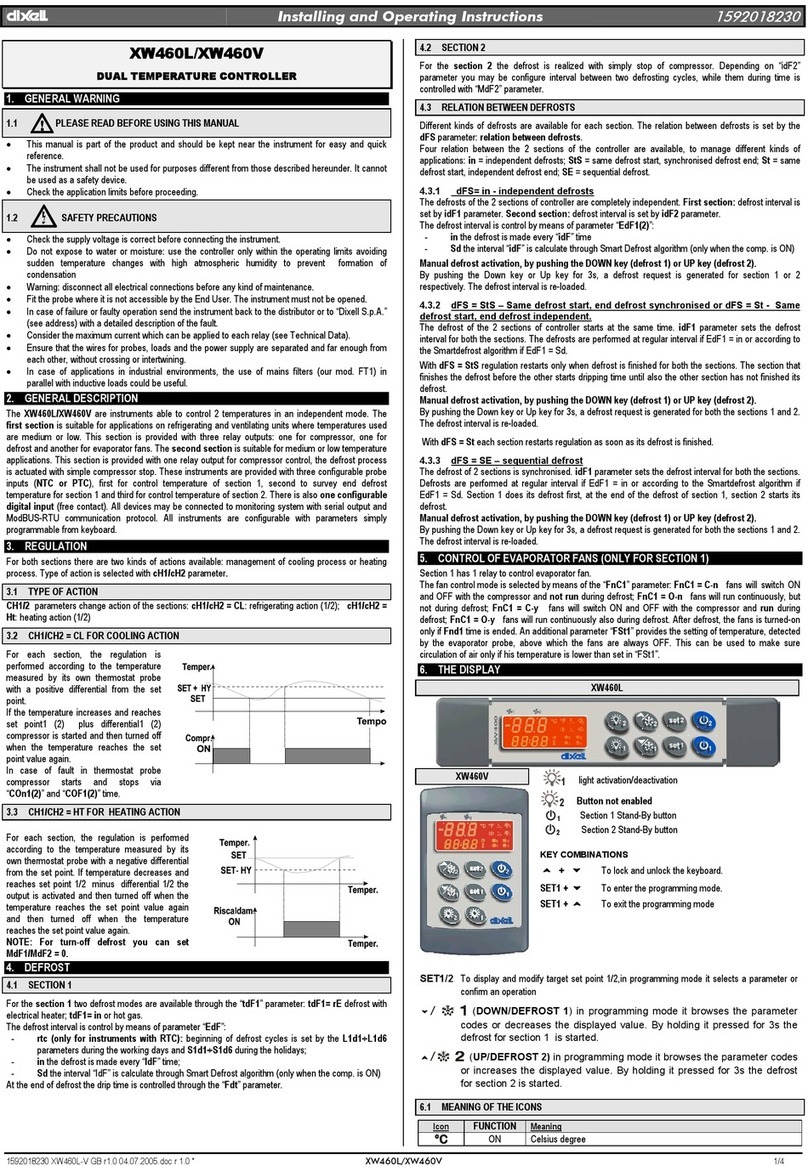
dixell
dixell XW460L Installing and operating instructions


